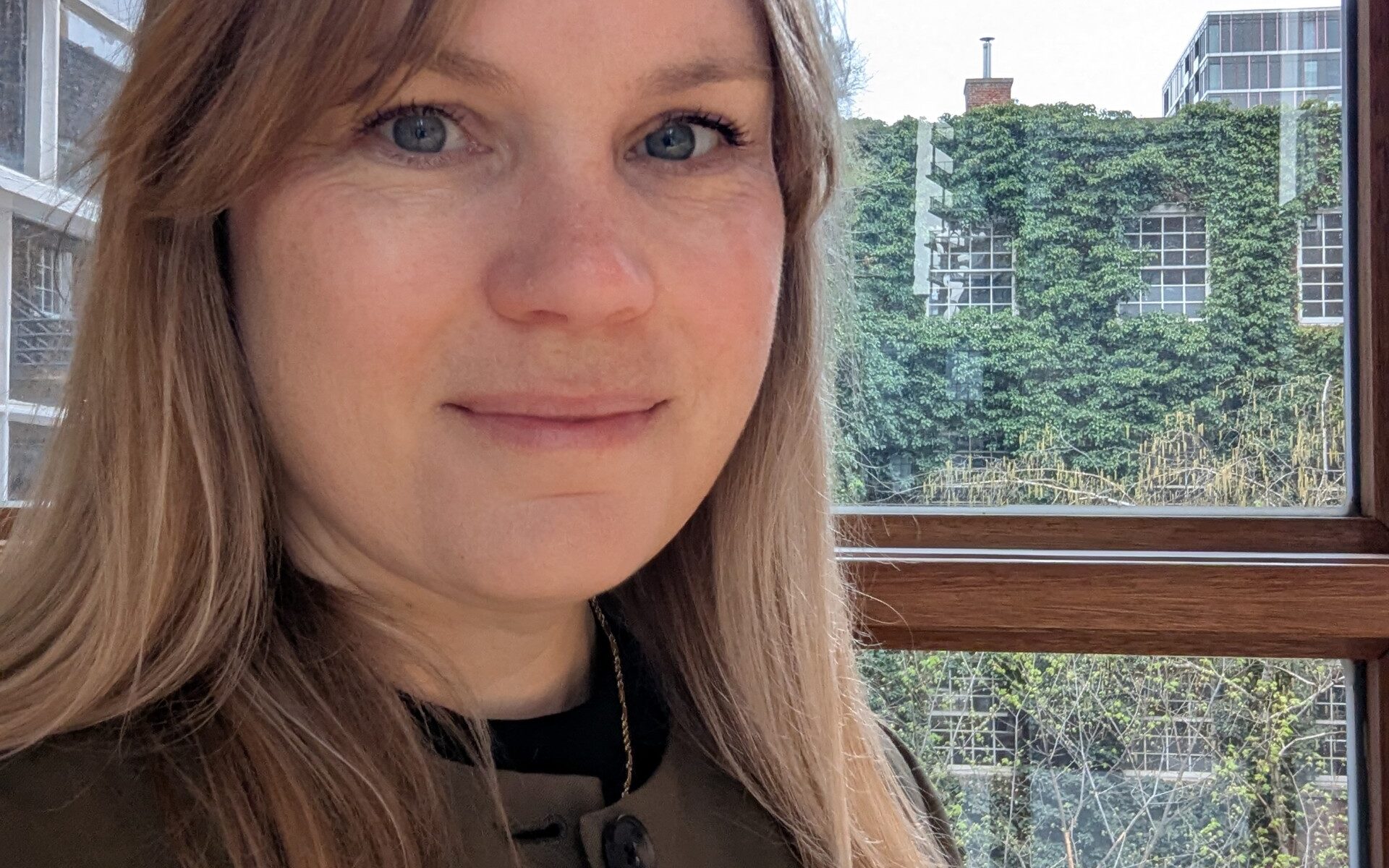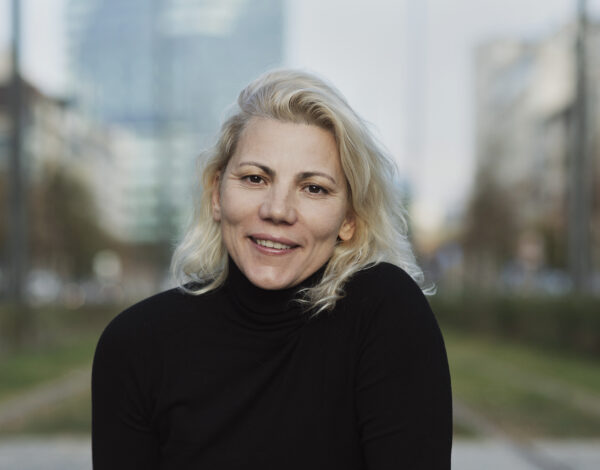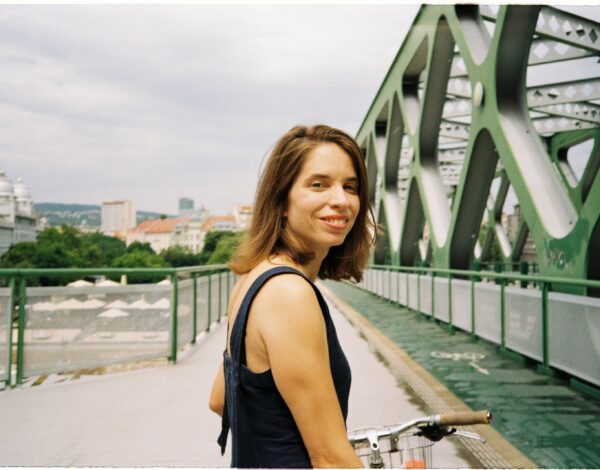Amanda O’Rourke is the Executive Director of 8 80 Cities. She has over 20 years of
experience leading strategic planning, partnership development, and managing high impact
teams. She has led award-winning and transformative human centered public space design
projects in cities and towns in Canada and the United States. Amanda has also led city
leadership training and capacity building programs in North America, Europe and Australia.
Amanda is a sought-after placemaking leader, writer, speaker, and experienced facilitator.
She enjoys working collaboratively with city governments and communities to advance
health, equity, and sustainability goals. Amanda holds a Master of Science in Urban
Planning from the University of Toronto and a Bachelor of Science in Environmental Biology from Queen’s University. She is a Co-Chair for World Urban Parks, Advisory Board Member to Healthy Places by Design, and a former Salzburg Global Fellow. Amanda was recently named one of the 10 most loved Torontonians in the last 10 years in Spacing Magazine’s 20th anniversary edition.
Tell us a little bit about yourself
I am the Executive Director of the non profit organization 8 80 Cities. The ”8 80” concept is based on the simple but powerful idea that if you build a city that’s good for an 8 year old and an 80 year old, you’ll build a better city for all.
I live in Toronto, Canada with my partner and three kids. I am an urban planner by training, a lover of all things cities, placemaking, and sustainable urbanism.
I’m an eternal optimist, I spend a lot of time dreaming of possibilities, but at more core I’m a pragmatist. Working with community and city partners on placemaking initiatives over the last 20 years I would say my personality is well suited to embracing the untidyness and messiness, and unpredictability of this work.
How/why did you become an urbanist?
I grew up in all different types of communities including big cities, small towns, suburbs, and rural communities. I was a shy kid that liked to play in the woods. I would spend hours outside, looking under rocks and sitting in trees I could climb.
In university I majored in biology in my undergraduate studies, because I was so interested and curious about systems and relationships in the natural environment. I later did environmental studies and urban planning for my Master’s degree as I became very interested in environmental activism and climate justice.
I am very interested in both the social and ecological dimensions of urbanism. I also think good urbanism is one of the most powerful tools we have to address some of the biggest challenges we face including climate change, loneliness, inequality and public health. I think a lot about how to create meaningful to ways to engage people in their daily life and routines in being part of the solution, to make the sustainable choice the easy choice.
My work at 8 80 Cities gives me incredible opportunities to learn from so many different places. Every new place or community I visit stirs up new curiosities and inspiration.
I still get a buzz out of all the things you can learn by being in a place – observing, listening, uncovering hidden treasures. In many ways I’m still that girl in the woods. But now, I’m studying and observing the richness and diversity of relationships in urban places.
We don’t need a million planning studies to make the changes we want to see in the world! Sometimes it just takes a leader to take action and show what’s possible.
What is your favourite city and what can we learn from it?
This is always such a hard question for me to answer! I have a number of cities that I love, but I strongly believe that we can learn something from every city. I really enjoy learning more from stories of urban transformation, of which every city has a unique story to tell. In general and more about just personal preference, I have a strong bias towards cities with waterfronts.
I am very fortunate to live in a city I love. Toronto is a city of many stories: stories of grassroots activism, rich cultural diversity, Indigenous resurgence, waterfront transformation, and a city that is experiencing so many growing pains and political challenges. It’s a great city for an urbanist trying to inspire new ways of thinking about public life in public space because it’s not an easy city to make changes in, and it’s full of suprises.
The stories and places that really stick with me over the years is Copenhagen’s transformation from a car-centric city to a people friendly one, one that embraces public life and where the bicycle is the easiset and most pleasant way to get around and experiice the city. I’ve also jumped in the harbour several times and am inspired by how much that invites such a strong relationship to the water for residents.
I admire the story of Melbourne’s transformation of their downtown. I love the newtork of laneways that have been transformed, the cozy, cool, and funky places you can explore, the Yarra river walk.
I’ve also just always loved Paris, what can I say, I’m a romatic, and it’s Paris. I feel like it speaks for itself. What they have done over the last decade when it comes to reclaiming car space and making it people space is truly inspiring.
I could write a whole book on this topic but other cities I admire and have learned so much from are New York, Bogota, Seoul, Helsingborg, Montreal, New Orleans, Helsinki. The list goes on!
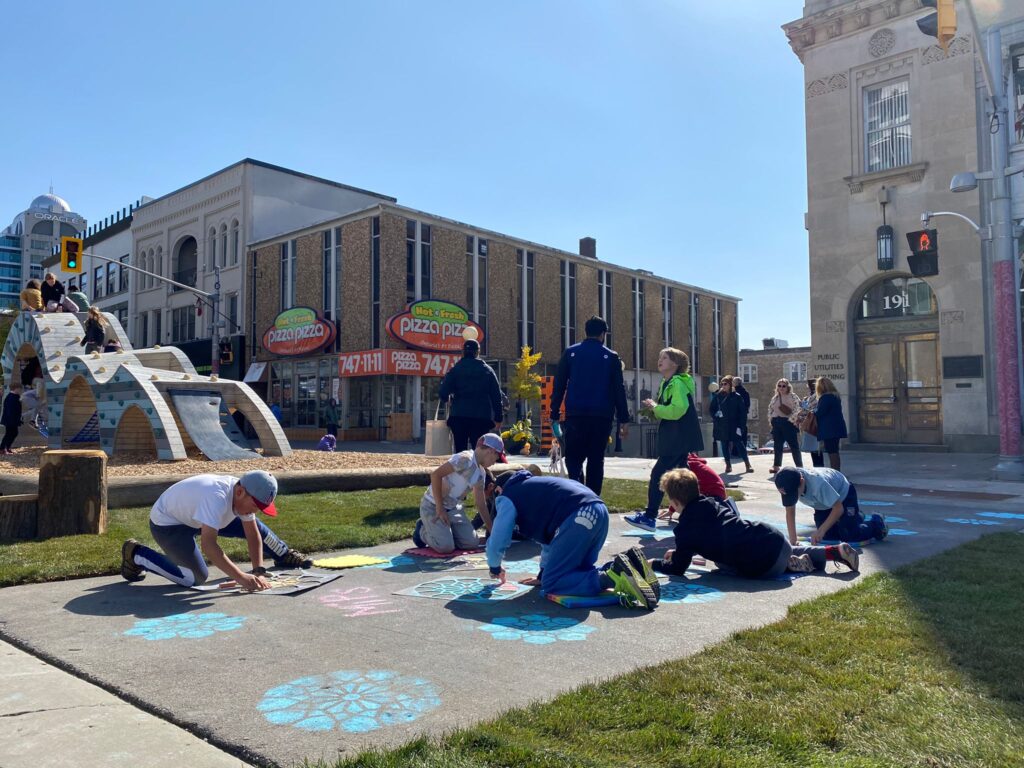
You are working as an executive director in the 8 80 cities organisation. What are the most important topics 8 80 Cities are working on?
We are working on what I think are some of the biggest topics and existential threats of my lifetime: climate change, inequity, loneliness, division, health disparity. Our mission as an organization is to ignite action and challenge the status quo to create healthier, more equitable, and sustainable cities. How we try to advance and break down that lofty and ambitious mission is through many different avenues and projects.
We are working on activating local champions and changemakers in local communities by providing funding and leadership training, we run immersive workshops and study tours for city leaders to build capcity for change and inspire action.
Our multidisciplinary team of urban designers, planners, community development specialists also deliver and implement bold public space activations and demonstrations that showcase what it means to be create inclusive places for people of all ages, abilities, backgrounds, and social locations.
We also conduct research on public space and placemaking, and mobilize knowldge and tell stories of the impact of our work so that cities and placemakers around the world can learn from each other.
Do you see potential in solutions like Parkly for developing urban environments?
Absolutely! Parkly is such a wonderful example of how big challenges can be addressed with simple solutions. Sometimes it just takes a leader to take action and show what’s possible. There is room for new ideas, solutions that are flexible, adaptive, and meet a need quickly. We don’t need a million planning studies to make the changes we want to see in the world!
The Parkly furniture instantly makes a place feel more fun, playful, colourful, green, nature filled, and more cared for. It signals that someone cares about this place. It invites more public life in public space, it invites people to linger, socialize, and interact with the beautiful plants and nature it attracts. It offers a tangible and attractive touchpoint for connection in spaces that are in need of a little love and attention.
Connected to the last question – what is your advice for cities interested in integrating more tactical actions for making their cities more liveable?
Just do it. Try it. It’s honestly not that complicated and the benefits can be tremendous. And if it doesn’t work then learn and try something different. Engage people in the process and you’ll be surprised how much meaning it can have, not just to individuals but also to the broader community.
I still get a buzz out of all the things you can learn by being in a place – observing, listening, uncovering hidden treasures. In many ways I’m still that girl in the woods. But now, I’m studying and observing the richness and diversity of relationships in urban places.
In your view, what is currently the most pressing issue for a city like Toronto as it strives to become greener, healthier, and more socially connected?
In my opinion the most pressing issue in Toronto is the need for leadership that prioritizes sustainable and responsible growth. We are a rapidly growing city and our investment in affordable housing, parks and public space, and sustainable transportation has not kept up with the pace of growth.
We have rising income inequality and a public space network and street network that doesn’t really serve the needs of all residents. We are still struggling with acknowldeging that the days of car-centric planning are not feasible, practical, or sustainable. Our lack of affordable housing supply and investment means that many young people cannot even see a future life in the city.
We are so lucky that people from all around the world choose Toronto as their home. It is a city with such richness in cultural diversity which is truly a huge strength. We as a city have not fully embraced the power of all of our public space assets to build a sense of connection, belonging, promote health, and ultimately create a more livable city for all.
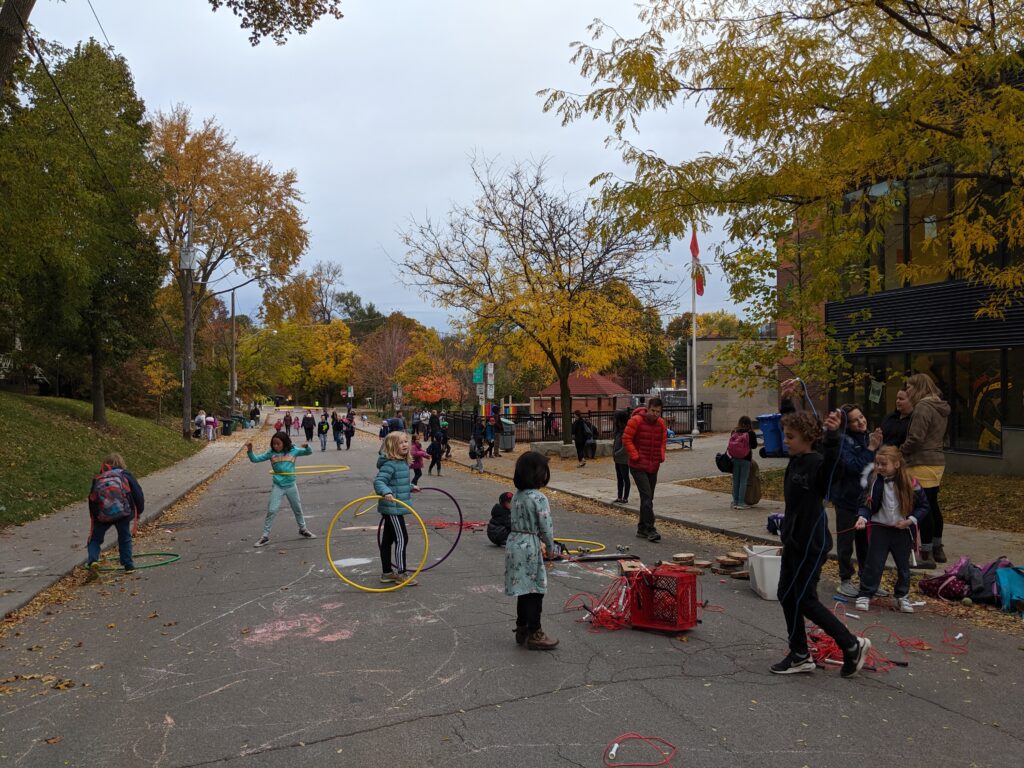
You recently visited Helsinki as part of a Canadian delegation for the Urban Healthy Policy workshop. What were your impressions of the city? Did anything stand out to you as particularly innovative or surprising?
Helsinki is such a beautiful, lively, green, and humane city. What struck me immediately was how things really work well for people. It’s such a walkable city, and city that you can easily navigate and get a sense of place and direction immediately. It’s a city that has all of these well planned networks and layers. The easy access to waterfront spaces and greenspaces, the incredible transit networks, streetcar, metro, trains, and buses, the bicycle networks, the network of libraries and culture/community houses, and of course the supply of housing by building functional neighbourhoods that are intentionally designed for social mixing, sociability, access to amenity and greenspace and practical daily life activities in close proximity, within a short walk.
Whenever I go to a city I also always look at who is in the public space. When I came to Helsinki I immediately noticed children. There were many children walking independently in the city, riding the transit, some on bicycles. I also noticed quite a few older adults in public spaces. This to me is also always a good indicator of how the city values accessible and welcoming space for all ages.
Prior to coming to Helsinki I had read so much about the ”functional” city in planning documents. When I came and experienced the city I could see that vision in action. It’s functional but it’s so much more than that. The city is designed for dignity, humanity, and connection to the natural environment . It is a city that feels like it is designed with a real attention to it’s natural surroundings and embraces the beauty of it landscape. It has a sense of vibrancy that city centers have but without the overwhelm that many urban spaces can have.

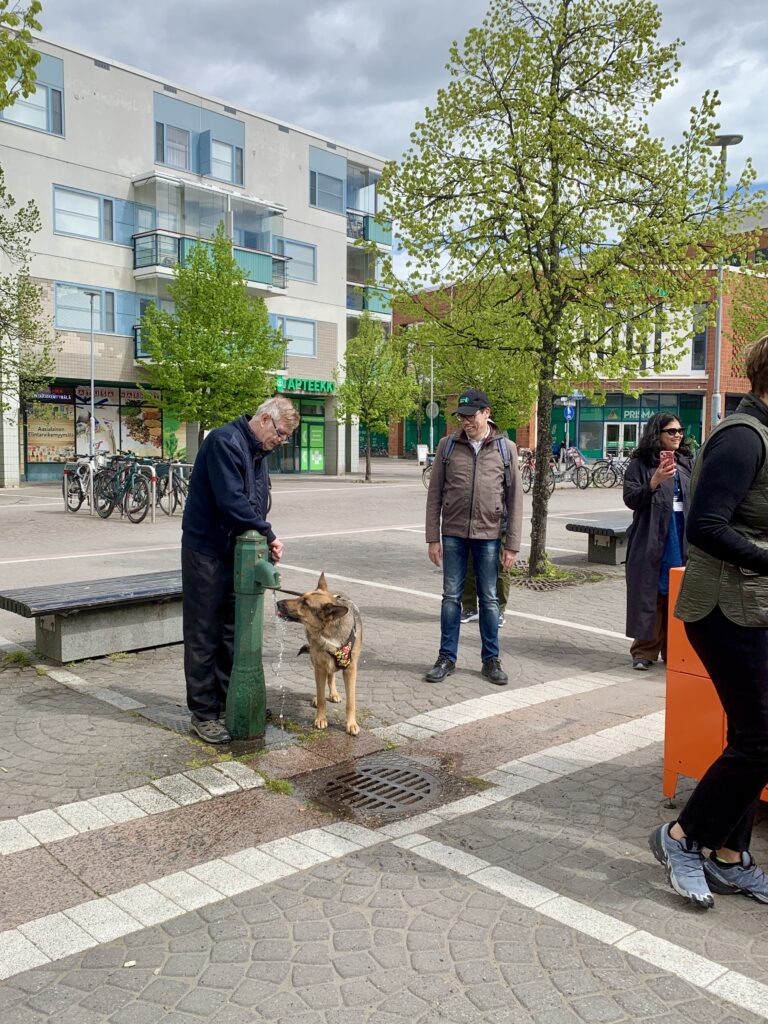
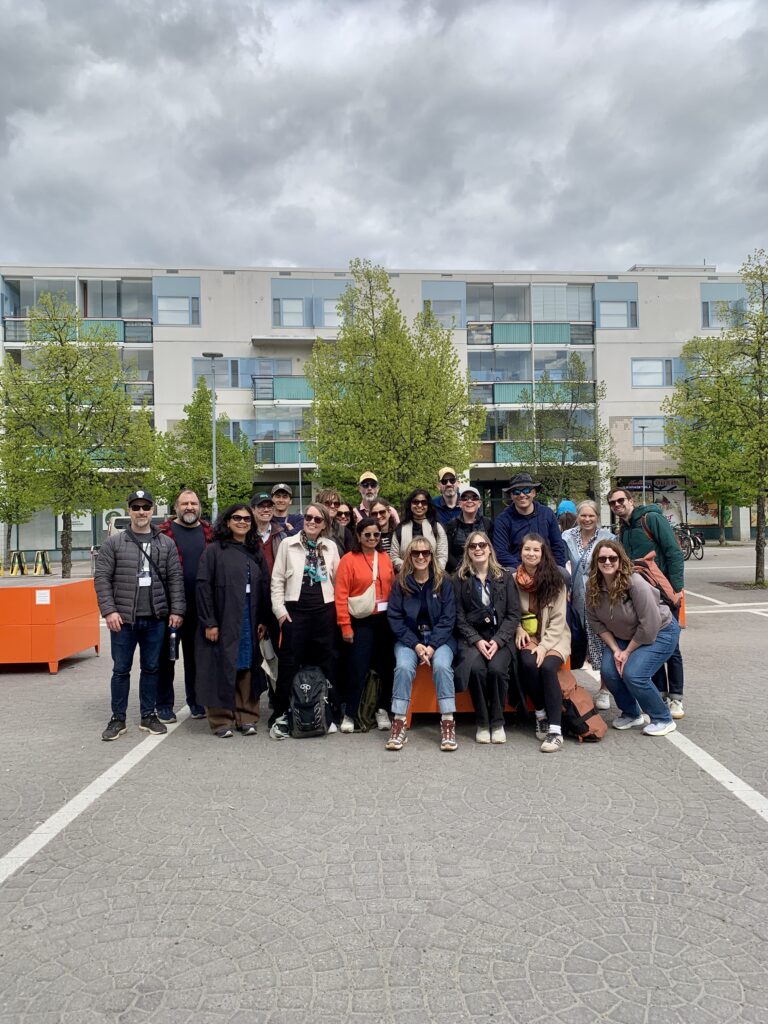
One of the things that really stood out to me was the focus on social welfare and care for all. For example, we learned about the free lunch in parks program. The idea that children could come to a local neighbourhood park in the summer and get a free meal, is such a powerful statement of the city’s values.
Similarly, we learned about your housing first approach. That there has been a dramatic decrease in people experiencing homelessness in the city because of leadership and investment to get people the housing they need, but not just housing, also the care and support they need.
Helsinki is one of the most caring cities that I have ever been to. It’s definitely a city where we learned so much about implementing healthy urban policies and about what it means to be a city that prioritizes health and well being for all residents.
Dream big! What does an ideal future city look and feel like?
It’s a city where everyone has a home and everyone can easily walk, bike, play. It’s a city where we can make friends, fall in love, thrive and have purpose, feel connected to our surroundings, appreciate the awe of nature, and take care of the land and each other.
